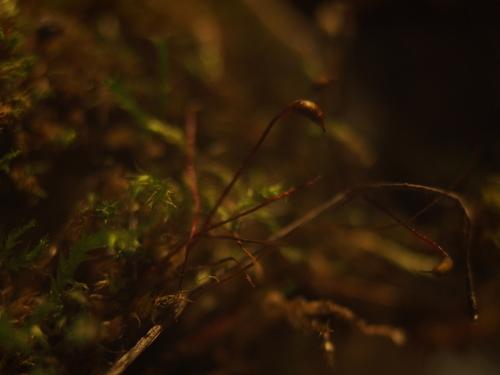
medium.jpeg from: https://www.inaturalist.org/taxa/403282-Lepidolaena-palpebrifolia
Exploring the Fascinating World of Lepidolaena Palpebrifolia Moss
Introduction
The world of mosses is full of incredible diversity and fascinating species. One particularly interesting moss is Lepidolaena palpebrifolia (Hook.) Dumort. ex Trevis., a member of the Lepidolaenaceae family. In this blog post, we’ll take a deep dive into this unique moss, exploring its morphology, global distribution, ecological roles, and more. Get ready to be amazed by the wonders of
F5233 from: https://www.biodiversity.no/Pages/F5233
Lepidolaena palpebrifolia!
Background on Mosses
Before we jump into the specifics of L. palpebrifolia, let’s briefly review what mosses are. Mosses are small, non-vascular plants in the division Bryophyta. They lack true roots, stems, and leaves, instead having structures that serve similar functions. Mosses reproduce via spores rather than seeds and require moisture for reproduction. There are over 12,000 species

47561982601_ff2fa0e32d_b.jpg from: https://www.flickr.com/photos/12639178@N07/47561982601/
of moss found all around the world in a variety of habitats.
Morphology and Identification
Lunularia-cruciata-L-Dumort-ex-Lindb-a-Habitat-b-Close-view-of-the-population-c-An.ppm from: https://www.researchgate.net/figure/Lunularia-cruciata-L-Dumort-ex-Lindb-a-Habitat-b-Close-view-of-the-population-c-An_fig2_330521563
Lepidolaena palpebrifolia is a leafy liverwort, meaning it has leaf-like structures arranged on a stem. The leaves are incubous (lying flat on top of each other like shingles) and have a characteristic sickle-shape. They are a dark green to brown color. The underside of the stem has reddish-purple rhizoids that help anchor the plant and absorb water and nutrients.
Sporophytes (spore-producing structures) on L. palpebrifolia are relatively uncommon. When present, they consist of a round capsule on a translucent seta (stalk). The capsule splits open into 4 valves to release the spores when mature.
A key identifying feature of this species is the presence of 2-4 cilia (hair-like structures) at the base of each leaf. It can be distinguished from the similar species Lepidolaena clavigera by its sickle-shaped leaves (compared to the tongue-shaped leaves of L. clavigera).
Global Distribution and Habitat
Lepidolaena palpebrifolia has a subantarctic distribution, found in southern Chile, Argentina, Australia, New Zealand, and some subantarctic islands. It grows in cool, humid environments from sea level to alpine elevations.
This moss is commonly found growing in cushion bogs, moorland, heath, and scrub. It grows intermixed with other bryophytes or can form pure mats.

Pellia-endiviifolia-(Dicks.)-Dumort.-460664.jpg from: https://www.biodiversidadvirtual.org/herbarium/Pellia-endiviifolia-(Dicks.)-Dumort.-img460664.html
L. palpebrifolia prefers acidic substrates

203969.jpg from: https://inpn.mnhn.fr/espece/cd_nom/6296
and is often found on peat, soil, rock, rotting logs, and sometimes tree bark.
Ecological Roles and Adaptations
Like other mosses, Lepidolaena palpebrifolia plays important roles in its ecosystem:
- Helps retain moisture and prevent erosion
- Provides habitat for micro-organisms and invertebrates

lepidolaena-t485-habit.JPG from: https://www.bluetier.org/Liverwort3/lepidolaena-485.htm
- Contributes to nutrient cycling and peat formation
- Acts as a pioneer species in disturbed or bare areas
This moss has several adaptations that allow it to thrive in its cool, acidic, nutrient-poor habitats:
- Thick cell walls help prevent desiccation
- Rhizoids assist in water and nutrient uptake
- Sickle-shaped leaves help direct water down the stem
- Asexual reproduction via fragmentation allows colonization of new areas
Case Study: Peatlands of Tierra del Fuego

lepidolaenaclavi1.jpeg from: https://www.kaimaibush.co.nz/liverworts/lepidolaenaceae.html
Some of the most extensive Lepidolaena palpebrifolia populations are found in the pristine peatlands of Tierra del Fuego at the southern tip of South America. These peatlands began forming after the last ice age and are now dominated by dense carpets of L. palpebrifolia and other bryophytes like Sphagnum magellanicum.
Studies in these peatlands have shown that L. palpebrifolia is a major peat-former, with dead moss remains accumulating at a rate of 1-2 mm per year. This moss also provides important habitat for invertebrates, with over 20 species found living among the moss cushions. Protecting these pristine peatlands is critical for maintaining biodiversity and carbon storage.

Tremblay_Lepidolaena_262_269.jpg from: https://www.nikonsmallworld.com/galleries/2015-photomicrography-competition/liverwort-lepidolaena-taylorii-plant

Lepid_brachy_lobules.jpg from: https://www.utas.edu.au/dicotkey/dicotkey/Lworts/gen_key/liv_leafkey3.htm
| Characteristic | Description |
|---|---|
| Family | Lepidolaenaceae |
| Growth Form | Leafy liverwort |
| Leaf Shape | Sickle-shaped, incubous |
| Leaf Color | Dark green to brown |
| Rhizoids | Reddish-purple, on underside of stem |
| Cilia | 2-4 per leaf base |
| Capsule | Round, splits into 4 valves |
| Habitat | Bogs, moorland, heath, scrub |
| Substrate | Peat, soil, rock, logs, tree bark |
| Distribution | Southern Chile, Argentina, Australia, New Zealand, subantarctic islands |
Conclusion
Lepidolaena palpebrifolia may be small, but this mighty moss plays an outsized role in its ecosystem. From forming peat to providing habitat, this species is an important part of subantarctic plant communities. Its unique adaptations allow it to thrive in challenging conditions.
The next time you’re in southern Chile or Argentina, keep an eye out for a carpet of dark green, sickle-shaped leaves—you may be looking at the amazing Lepidolaena palpebrifolia! What other secrets do you think this incredible moss holds? The more we study species like this, the more we realize how much there is still to discover in the world of bryophytes.